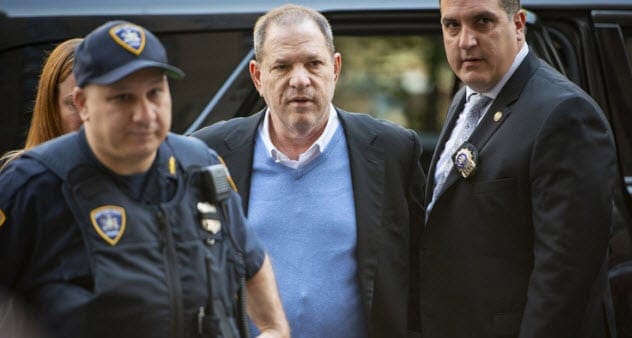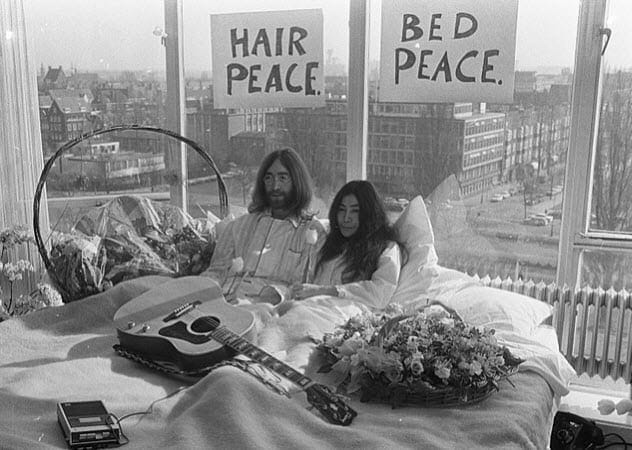Before Cameron Diaz became famous, she posed topless for photographer John Rutter. Years later, Rutter tried to extort $3.5 million from her for the risqué photos. He hoped to sell them to an interested buyer, but instead, he was sentenced to up to five years in prison for grand theft, forgery, and perjury.
Rutter’s claim that Diaz had signed a model release was disproven by expert witnesses who testified that he had forged her signature. His attempt to profit from Diaz’s past backfired spectacularly.
A Memoir as Good as a Deathbed Confession
Mel Patrick Lynch and Dominic Byrne kidnapped Samuel Bronfman II, heir to the Seagram’s distilling fortune, demanding a $2.3 million ransom. Police stormed their apartment, finding Bronfman bound and blindfolded. At trial, Lynch and Byrne were convicted of extortion, but not kidnapping, after claiming Bronfman staged his own abduction.
Years later, Byrne’s attorney published a memoir, admitting the kidnapping was real and his defense was a lie. This “deathbed confession” exposed the truth, but also raised ethical questions about a lawyer’s duty to his client, even after death. Bronfman’s reputation never fully recovered, forever tainted by the allegations.
Compromising Photos

John Stamos was targeted by Allison Lenore Coss and Scott Edward Sippola, who claimed to have “compromising photos” of him from a party years earlier. Coss contacted Stamos, saying a man named “Brian” possessed the photos and wanted $680,000.
Stamos contacted the FBI, who set up a sting operation. Coss and Sippola were arrested, and it was revealed that they had fabricated the photos and the existence of “Brian.” They had previously tried to extort Stamos, claiming Coss was pregnant with his child. Both received four-year prison sentences for their failed scheme.
High Rollers

Disgraced movie producer Harvey Weinstein was among the victims of Vivek Shah, an actor who moonlighted as an extortionist. Shah targeted other high-profile individuals, including Ryan Kavanagh, Chris Cline, Eric Lefkofsky, Gary Goetzman, Dannine Avara, and Terry Pegula.
Shah mailed threats to kill the spouses and children of his victims if his demands were not met, hoping to collect $120 million. His scheme involved opening fraudulent financial accounts and using prepaid debit cards to conceal the money. The FBI caught up with him, and he was sentenced to over seven years in federal prison, ending his dreams of wealth and a revived acting career.
These ten cases highlight the high-stakes game of extortion and the dramatic consequences that can follow. From celebrities to millionaires, these shakedown attempts serve as cautionary tales for anyone considering such a dangerous path.
What do you think about these failed extortion attempts? Share your thoughts in the comments below!
Thomas George Paculis tried to extort celebrity chef Paula Deen for $200,000. He threatened to reveal damaging information about Deen, who had already faced backlash for alleged racial discrimination. Paculis hoped Deen would pay to avoid more bad press, citing his own “bad economic times” as motivation.
Paculis emailed Deen’s attorney, inviting him to “make me an offer I can’t refuse.” The FBI monitored a conversation where Paculis agreed to the money in exchange for his silence. He was arrested and sentenced to two years in federal prison.
No Show

David Hans Schmidt thought stolen wedding photos of Katie Holmes and Tom Cruise were worth a million dollars, possibly even $1.3 million. Instead of a payday, he faced a couple of years in prison after agreeing to plead guilty to extortion. Schmidt was under house arrest awaiting his court appearance.
However, Schmidt never made it to court. He committed suicide, found dead in his townhouse. Ironically, he had planned to ask for probation, leaving the true reason for his suicide a mystery.
Hijacked Claims
Michael Avenatti, a “celebrity attorney,” attempted to extort Nike for $25 million. He demanded Nike pay both his client, Gary Franklin, and himself a substantial sum to investigate the company’s recruiting activities. Avenatti essentially tried to hijack his client’s claims to enrich himself.
Avenatti’s actions led to his downfall. The judge declared he was using his client’s claims to extort millions from Nike for personal gain. He was convicted and sentenced to 2.5 years in prison.
Topless Shots
Before Cameron Diaz became famous, she posed topless for photographer John Rutter. Years later, Rutter tried to extort $3.5 million from her for the risqué photos. He hoped to sell them to an interested buyer, but instead, he was sentenced to up to five years in prison for grand theft, forgery, and perjury.
Rutter’s claim that Diaz had signed a model release was disproven by expert witnesses who testified that he had forged her signature. His attempt to profit from Diaz’s past backfired spectacularly.
A Memoir as Good as a Deathbed Confession
Mel Patrick Lynch and Dominic Byrne kidnapped Samuel Bronfman II, heir to the Seagram’s distilling fortune, demanding a $2.3 million ransom. Police stormed their apartment, finding Bronfman bound and blindfolded. At trial, Lynch and Byrne were convicted of extortion, but not kidnapping, after claiming Bronfman staged his own abduction.
Years later, Byrne’s attorney published a memoir, admitting the kidnapping was real and his defense was a lie. This “deathbed confession” exposed the truth, but also raised ethical questions about a lawyer’s duty to his client, even after death. Bronfman’s reputation never fully recovered, forever tainted by the allegations.
Compromising Photos

John Stamos was targeted by Allison Lenore Coss and Scott Edward Sippola, who claimed to have “compromising photos” of him from a party years earlier. Coss contacted Stamos, saying a man named “Brian” possessed the photos and wanted $680,000.
Stamos contacted the FBI, who set up a sting operation. Coss and Sippola were arrested, and it was revealed that they had fabricated the photos and the existence of “Brian.” They had previously tried to extort Stamos, claiming Coss was pregnant with his child. Both received four-year prison sentences for their failed scheme.
High Rollers

Disgraced movie producer Harvey Weinstein was among the victims of Vivek Shah, an actor who moonlighted as an extortionist. Shah targeted other high-profile individuals, including Ryan Kavanagh, Chris Cline, Eric Lefkofsky, Gary Goetzman, Dannine Avara, and Terry Pegula.
Shah mailed threats to kill the spouses and children of his victims if his demands were not met, hoping to collect $120 million. His scheme involved opening fraudulent financial accounts and using prepaid debit cards to conceal the money. The FBI caught up with him, and he was sentenced to over seven years in federal prison, ending his dreams of wealth and a revived acting career.
These ten cases highlight the high-stakes game of extortion and the dramatic consequences that can follow. From celebrities to millionaires, these shakedown attempts serve as cautionary tales for anyone considering such a dangerous path.
What do you think about these failed extortion attempts? Share your thoughts in the comments below!
Edis Kayalar attempted to extort Cindy Crawford and her husband with a photo of their 7-year-old daughter tied to a chair and gagged, taken by the nanny during a game of “cops and robbers.” Kayalar demanded $100,000, believing the supermodel would pay to keep the image out of the tabloids.
After being deported to Germany for being in the U.S. illegally, Kayalar called Crawford again, repeating his demand. This time, he was charged and eventually sentenced to two years in prison. His defense that the money was to cover his costs for warning Crawford about the nanny’s bad influence didn’t convince the judge.
An Offer He Couldn’t Refuse
Thomas George Paculis tried to extort celebrity chef Paula Deen for $200,000. He threatened to reveal damaging information about Deen, who had already faced backlash for alleged racial discrimination. Paculis hoped Deen would pay to avoid more bad press, citing his own “bad economic times” as motivation.
Paculis emailed Deen’s attorney, inviting him to “make me an offer I can’t refuse.” The FBI monitored a conversation where Paculis agreed to the money in exchange for his silence. He was arrested and sentenced to two years in federal prison.
No Show

David Hans Schmidt thought stolen wedding photos of Katie Holmes and Tom Cruise were worth a million dollars, possibly even $1.3 million. Instead of a payday, he faced a couple of years in prison after agreeing to plead guilty to extortion. Schmidt was under house arrest awaiting his court appearance.
However, Schmidt never made it to court. He committed suicide, found dead in his townhouse. Ironically, he had planned to ask for probation, leaving the true reason for his suicide a mystery.
Hijacked Claims
Michael Avenatti, a “celebrity attorney,” attempted to extort Nike for $25 million. He demanded Nike pay both his client, Gary Franklin, and himself a substantial sum to investigate the company’s recruiting activities. Avenatti essentially tried to hijack his client’s claims to enrich himself.
Avenatti’s actions led to his downfall. The judge declared he was using his client’s claims to extort millions from Nike for personal gain. He was convicted and sentenced to 2.5 years in prison.
Topless Shots
Before Cameron Diaz became famous, she posed topless for photographer John Rutter. Years later, Rutter tried to extort $3.5 million from her for the risqué photos. He hoped to sell them to an interested buyer, but instead, he was sentenced to up to five years in prison for grand theft, forgery, and perjury.
Rutter’s claim that Diaz had signed a model release was disproven by expert witnesses who testified that he had forged her signature. His attempt to profit from Diaz’s past backfired spectacularly.
A Memoir as Good as a Deathbed Confession
Mel Patrick Lynch and Dominic Byrne kidnapped Samuel Bronfman II, heir to the Seagram’s distilling fortune, demanding a $2.3 million ransom. Police stormed their apartment, finding Bronfman bound and blindfolded. At trial, Lynch and Byrne were convicted of extortion, but not kidnapping, after claiming Bronfman staged his own abduction.
Years later, Byrne’s attorney published a memoir, admitting the kidnapping was real and his defense was a lie. This “deathbed confession” exposed the truth, but also raised ethical questions about a lawyer’s duty to his client, even after death. Bronfman’s reputation never fully recovered, forever tainted by the allegations.
Compromising Photos

John Stamos was targeted by Allison Lenore Coss and Scott Edward Sippola, who claimed to have “compromising photos” of him from a party years earlier. Coss contacted Stamos, saying a man named “Brian” possessed the photos and wanted $680,000.
Stamos contacted the FBI, who set up a sting operation. Coss and Sippola were arrested, and it was revealed that they had fabricated the photos and the existence of “Brian.” They had previously tried to extort Stamos, claiming Coss was pregnant with his child. Both received four-year prison sentences for their failed scheme.
High Rollers

Disgraced movie producer Harvey Weinstein was among the victims of Vivek Shah, an actor who moonlighted as an extortionist. Shah targeted other high-profile individuals, including Ryan Kavanagh, Chris Cline, Eric Lefkofsky, Gary Goetzman, Dannine Avara, and Terry Pegula.
Shah mailed threats to kill the spouses and children of his victims if his demands were not met, hoping to collect $120 million. His scheme involved opening fraudulent financial accounts and using prepaid debit cards to conceal the money. The FBI caught up with him, and he was sentenced to over seven years in federal prison, ending his dreams of wealth and a revived acting career.
These ten cases highlight the high-stakes game of extortion and the dramatic consequences that can follow. From celebrities to millionaires, these shakedown attempts serve as cautionary tales for anyone considering such a dangerous path.
What do you think about these failed extortion attempts? Share your thoughts in the comments below!
Extortion is a serious crime that can ruin lives, leading to hefty fines and significant jail time. These attempts often grab headlines, especially when the targets are celebrities, business moguls, or their families. But what happens when these shakedowns don’t go as planned? Here are 10 unbelievable extortion attempts that backfired in spectacular fashion.
Driving Ms. Ono

Yoko Ono’s chauffeur, Koral Karsan, took his job way too far. Not content with his $150,000-$200,000 annual salary, he demanded $2 million from John Lennon’s widow. He also allegedly threatened to have her killed if she didn’t comply. Karsan claimed to possess embarrassing recordings and photos of Ono, which he planned to publish in a book and distribute online.
His scheme quickly unraveled when he was arrested for attempted grand larceny. Karsan later admitted to demanding only $3,000 and using hidden cameras to record Ono, but showed no remorse. He was sentenced to time served (60 days) and then handed over to immigration officials.
“Terrible, Terrible Things”
In 2009, David Letterman revealed on his show that he was the target of an extortion plot. An individual threatened to expose Letterman’s sexual relationships with female staff members unless he paid a large sum of money. The extortionist sent a package containing a letter claiming knowledge of Letterman’s “terrible, terrible things” and promising proof.
Letterman cooperated with authorities, and the extortionist, Robert “Joe” Halderman, was caught trying to cash a phony $2 million check. Halderman received a six-month jail sentence and 1,000 hours of community service. Letterman’s honest and awkward confession to his audience turned a potentially devastating scandal into a bizarre, public spectacle.
Cops and Robbers
Edis Kayalar attempted to extort Cindy Crawford and her husband with a photo of their 7-year-old daughter tied to a chair and gagged, taken by the nanny during a game of “cops and robbers.” Kayalar demanded $100,000, believing the supermodel would pay to keep the image out of the tabloids.
After being deported to Germany for being in the U.S. illegally, Kayalar called Crawford again, repeating his demand. This time, he was charged and eventually sentenced to two years in prison. His defense that the money was to cover his costs for warning Crawford about the nanny’s bad influence didn’t convince the judge.
An Offer He Couldn’t Refuse
Thomas George Paculis tried to extort celebrity chef Paula Deen for $200,000. He threatened to reveal damaging information about Deen, who had already faced backlash for alleged racial discrimination. Paculis hoped Deen would pay to avoid more bad press, citing his own “bad economic times” as motivation.
Paculis emailed Deen’s attorney, inviting him to “make me an offer I can’t refuse.” The FBI monitored a conversation where Paculis agreed to the money in exchange for his silence. He was arrested and sentenced to two years in federal prison.
No Show

David Hans Schmidt thought stolen wedding photos of Katie Holmes and Tom Cruise were worth a million dollars, possibly even $1.3 million. Instead of a payday, he faced a couple of years in prison after agreeing to plead guilty to extortion. Schmidt was under house arrest awaiting his court appearance.
However, Schmidt never made it to court. He committed suicide, found dead in his townhouse. Ironically, he had planned to ask for probation, leaving the true reason for his suicide a mystery.
Hijacked Claims
Michael Avenatti, a “celebrity attorney,” attempted to extort Nike for $25 million. He demanded Nike pay both his client, Gary Franklin, and himself a substantial sum to investigate the company’s recruiting activities. Avenatti essentially tried to hijack his client’s claims to enrich himself.
Avenatti’s actions led to his downfall. The judge declared he was using his client’s claims to extort millions from Nike for personal gain. He was convicted and sentenced to 2.5 years in prison.
Topless Shots
Before Cameron Diaz became famous, she posed topless for photographer John Rutter. Years later, Rutter tried to extort $3.5 million from her for the risqué photos. He hoped to sell them to an interested buyer, but instead, he was sentenced to up to five years in prison for grand theft, forgery, and perjury.
Rutter’s claim that Diaz had signed a model release was disproven by expert witnesses who testified that he had forged her signature. His attempt to profit from Diaz’s past backfired spectacularly.
A Memoir as Good as a Deathbed Confession
Mel Patrick Lynch and Dominic Byrne kidnapped Samuel Bronfman II, heir to the Seagram’s distilling fortune, demanding a $2.3 million ransom. Police stormed their apartment, finding Bronfman bound and blindfolded. At trial, Lynch and Byrne were convicted of extortion, but not kidnapping, after claiming Bronfman staged his own abduction.
Years later, Byrne’s attorney published a memoir, admitting the kidnapping was real and his defense was a lie. This “deathbed confession” exposed the truth, but also raised ethical questions about a lawyer’s duty to his client, even after death. Bronfman’s reputation never fully recovered, forever tainted by the allegations.
Compromising Photos

John Stamos was targeted by Allison Lenore Coss and Scott Edward Sippola, who claimed to have “compromising photos” of him from a party years earlier. Coss contacted Stamos, saying a man named “Brian” possessed the photos and wanted $680,000.
Stamos contacted the FBI, who set up a sting operation. Coss and Sippola were arrested, and it was revealed that they had fabricated the photos and the existence of “Brian.” They had previously tried to extort Stamos, claiming Coss was pregnant with his child. Both received four-year prison sentences for their failed scheme.
High Rollers

Disgraced movie producer Harvey Weinstein was among the victims of Vivek Shah, an actor who moonlighted as an extortionist. Shah targeted other high-profile individuals, including Ryan Kavanagh, Chris Cline, Eric Lefkofsky, Gary Goetzman, Dannine Avara, and Terry Pegula.
Shah mailed threats to kill the spouses and children of his victims if his demands were not met, hoping to collect $120 million. His scheme involved opening fraudulent financial accounts and using prepaid debit cards to conceal the money. The FBI caught up with him, and he was sentenced to over seven years in federal prison, ending his dreams of wealth and a revived acting career.
These ten cases highlight the high-stakes game of extortion and the dramatic consequences that can follow. From celebrities to millionaires, these shakedown attempts serve as cautionary tales for anyone considering such a dangerous path.
What do you think about these failed extortion attempts? Share your thoughts in the comments below!
Extortion is a serious crime that can ruin lives, leading to hefty fines and significant jail time. These attempts often grab headlines, especially when the targets are celebrities, business moguls, or their families. But what happens when these shakedowns don’t go as planned? Here are 10 unbelievable extortion attempts that backfired in spectacular fashion.
Driving Ms. Ono

Yoko Ono’s chauffeur, Koral Karsan, took his job way too far. Not content with his $150,000-$200,000 annual salary, he demanded $2 million from John Lennon’s widow. He also allegedly threatened to have her killed if she didn’t comply. Karsan claimed to possess embarrassing recordings and photos of Ono, which he planned to publish in a book and distribute online.
His scheme quickly unraveled when he was arrested for attempted grand larceny. Karsan later admitted to demanding only $3,000 and using hidden cameras to record Ono, but showed no remorse. He was sentenced to time served (60 days) and then handed over to immigration officials.
“Terrible, Terrible Things”
In 2009, David Letterman revealed on his show that he was the target of an extortion plot. An individual threatened to expose Letterman’s sexual relationships with female staff members unless he paid a large sum of money. The extortionist sent a package containing a letter claiming knowledge of Letterman’s “terrible, terrible things” and promising proof.
Letterman cooperated with authorities, and the extortionist, Robert “Joe” Halderman, was caught trying to cash a phony $2 million check. Halderman received a six-month jail sentence and 1,000 hours of community service. Letterman’s honest and awkward confession to his audience turned a potentially devastating scandal into a bizarre, public spectacle.
Cops and Robbers
Edis Kayalar attempted to extort Cindy Crawford and her husband with a photo of their 7-year-old daughter tied to a chair and gagged, taken by the nanny during a game of “cops and robbers.” Kayalar demanded $100,000, believing the supermodel would pay to keep the image out of the tabloids.
After being deported to Germany for being in the U.S. illegally, Kayalar called Crawford again, repeating his demand. This time, he was charged and eventually sentenced to two years in prison. His defense that the money was to cover his costs for warning Crawford about the nanny’s bad influence didn’t convince the judge.
An Offer He Couldn’t Refuse
Thomas George Paculis tried to extort celebrity chef Paula Deen for $200,000. He threatened to reveal damaging information about Deen, who had already faced backlash for alleged racial discrimination. Paculis hoped Deen would pay to avoid more bad press, citing his own “bad economic times” as motivation.
Paculis emailed Deen’s attorney, inviting him to “make me an offer I can’t refuse.” The FBI monitored a conversation where Paculis agreed to the money in exchange for his silence. He was arrested and sentenced to two years in federal prison.
No Show

David Hans Schmidt thought stolen wedding photos of Katie Holmes and Tom Cruise were worth a million dollars, possibly even $1.3 million. Instead of a payday, he faced a couple of years in prison after agreeing to plead guilty to extortion. Schmidt was under house arrest awaiting his court appearance.
However, Schmidt never made it to court. He committed suicide, found dead in his townhouse. Ironically, he had planned to ask for probation, leaving the true reason for his suicide a mystery.
Hijacked Claims
Michael Avenatti, a “celebrity attorney,” attempted to extort Nike for $25 million. He demanded Nike pay both his client, Gary Franklin, and himself a substantial sum to investigate the company’s recruiting activities. Avenatti essentially tried to hijack his client’s claims to enrich himself.
Avenatti’s actions led to his downfall. The judge declared he was using his client’s claims to extort millions from Nike for personal gain. He was convicted and sentenced to 2.5 years in prison.
Topless Shots
Before Cameron Diaz became famous, she posed topless for photographer John Rutter. Years later, Rutter tried to extort $3.5 million from her for the risqué photos. He hoped to sell them to an interested buyer, but instead, he was sentenced to up to five years in prison for grand theft, forgery, and perjury.
Rutter’s claim that Diaz had signed a model release was disproven by expert witnesses who testified that he had forged her signature. His attempt to profit from Diaz’s past backfired spectacularly.
A Memoir as Good as a Deathbed Confession
Mel Patrick Lynch and Dominic Byrne kidnapped Samuel Bronfman II, heir to the Seagram’s distilling fortune, demanding a $2.3 million ransom. Police stormed their apartment, finding Bronfman bound and blindfolded. At trial, Lynch and Byrne were convicted of extortion, but not kidnapping, after claiming Bronfman staged his own abduction.
Years later, Byrne’s attorney published a memoir, admitting the kidnapping was real and his defense was a lie. This “deathbed confession” exposed the truth, but also raised ethical questions about a lawyer’s duty to his client, even after death. Bronfman’s reputation never fully recovered, forever tainted by the allegations.
Compromising Photos

John Stamos was targeted by Allison Lenore Coss and Scott Edward Sippola, who claimed to have “compromising photos” of him from a party years earlier. Coss contacted Stamos, saying a man named “Brian” possessed the photos and wanted $680,000.
Stamos contacted the FBI, who set up a sting operation. Coss and Sippola were arrested, and it was revealed that they had fabricated the photos and the existence of “Brian.” They had previously tried to extort Stamos, claiming Coss was pregnant with his child. Both received four-year prison sentences for their failed scheme.
High Rollers

Disgraced movie producer Harvey Weinstein was among the victims of Vivek Shah, an actor who moonlighted as an extortionist. Shah targeted other high-profile individuals, including Ryan Kavanagh, Chris Cline, Eric Lefkofsky, Gary Goetzman, Dannine Avara, and Terry Pegula.
Shah mailed threats to kill the spouses and children of his victims if his demands were not met, hoping to collect $120 million. His scheme involved opening fraudulent financial accounts and using prepaid debit cards to conceal the money. The FBI caught up with him, and he was sentenced to over seven years in federal prison, ending his dreams of wealth and a revived acting career.
These ten cases highlight the high-stakes game of extortion and the dramatic consequences that can follow. From celebrities to millionaires, these shakedown attempts serve as cautionary tales for anyone considering such a dangerous path.
What do you think about these failed extortion attempts? Share your thoughts in the comments below!










